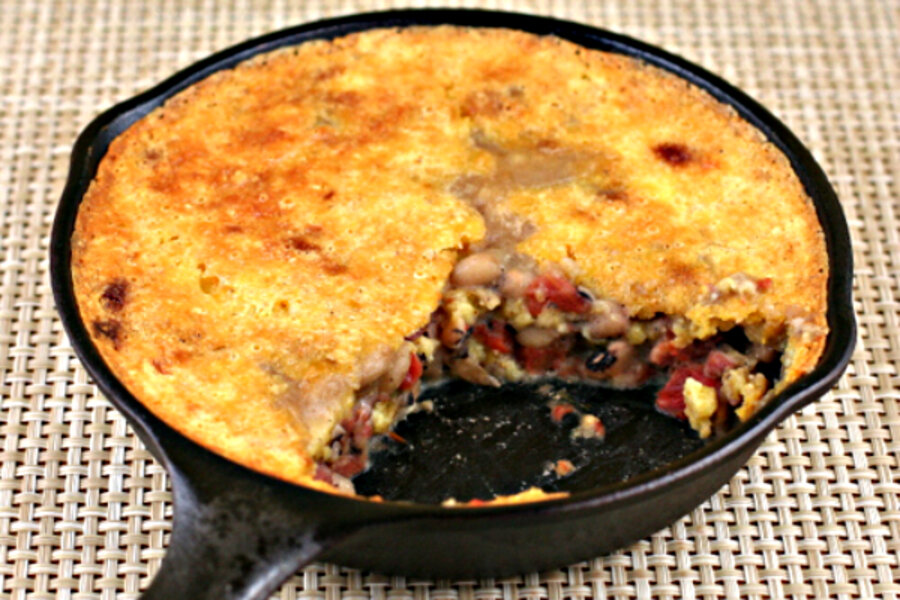By Perre Coleman Magness, The Runaway Spoon
For the Black-eyed Peas:
4 ounces center cut country ham biscuit slices
4 cups of water
Half of a small yellow onion
2 garlic cloves
2 bay leaves
1 teaspoon Creole seasoning (I like Tony Chachere’s)
12 ounces frozen black-eyed peas
3 green onions, white and light green part only, finely chopped
2 tablespoons butter
1 tablespoon flour
1 (14.5-ounce can) diced tomatoes with green chile (or plain diced tomatoes), drained
Salt to taste
1. Cut the country ham into small cubes and put it in a saucepan with the halved onion, garlic and bay leaves. Pour over 4 cups of water. Bring to a boil, skim off any scum that rises, lower the heat to medium low and simmer, covered, for 30 minutes. Add the black-eyed peas and 1/2 teaspoon of the creole seasoning. Simmer for 1 hour, or until the peas are tender.
2. Drain the peas, reserving the cooking liquid. Discard the onion, garlic and bay leaves. Rinse out the bean pot and return it to the heat. Melt the butter in the pot, then add the chopped green onions and cook until soft and translucent, but do not brown. Sprinkle in the flour and stir until smooth and pale. Stir in 1 cup of the cooking liquid and cook until the sauce is thickened and reduced slightly, about 8 minutes. Season with the remaining 1/2 teaspoon Creole seasoning (or to taste). When the sauce has thickened, add the peas and ham and stir to coat. Stir in the drained tomatoes and cook until the sauce has reduced a bit more and just coats the peas, about 5 minutes. Taste for seasoning and add salt if needed.
3. Brush a 10-inch cast iron skillet with oil. Scrape the cooked peas into the skillet and smooth the top. Set aside while you make the cornbread.
For the Cornbread:
1 cup yellow cornmeal
1 teaspoon baking soda
1/2 teaspoon salt
2 cups buttermilk
1 egg
2 tablespoons butter, melted and cooled
1. Preheat the oven to 350 degrees F.
2. Stir the cornmeal, baking soda and salt together in a bowl using a fork. In a large measuring jug, measure the buttermilk, then add the egg and melted butter and beat until combined. Pour the buttermilk into the dry ingredients and stir until just combined.
3. Spread the cornbread batter over the top of the peas in the skillet. Carefully transfer the skillet to the oven and bake for 30 minutes, or until the cornbread is puffed, golden, and set.
Read the full post on Stir It Up!







